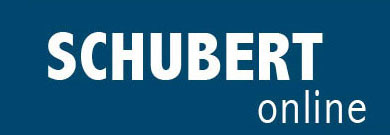About this project
About this project
Research and preserve Music manuscripts are valuable, inherently fragile and worthy of protection. The unavoidable deterioration of autographic documents is reinforced by additional physical access. www.schubert-online.at - Schubert music manuscripts, first and early editions online The publication and archiving system for digital reproductions of Schubert music manuscripts was developed by the Institute for Applied Musicology and Psychology (IAMP) in cooperation with the music collection of the Vienna City Library and the Institute of Musicology at the University of Vienna. The project was funded by the Vienna Science and Technology Fund (WWTF). Since 2010, the database is hosted by the Department of Musicology at the Austrian Centre for Digital Humanities and Cultural Heritage (until 2019 at the former Institute of Art History and Musicology) at the Austrian Academy of Sciences. The database has gradually been extended in cooperation with the music collection of the National Library of Austria, the Berlin State Library – Prussian Cultural Heritage and the National Library of Norway. Schubert-online currently provides access to digital images of more than 500 music manuscripts and an additional selection of letters and biographical documents. In 2015, more than 600 Schubert first and early editions from the music collection of the National Library of Austria have been integrated. Tools and features The publication and archiving system developed by IAMP provides: Cooperation between different collections A composer's inheritance is rarely stored in one single place. Usually, music manuscripts or even parts of it are scattered over several archives and libraries. The publication and archiving system for digitized music manuscripts developed by IAMP was especially designed to cope with this unfortunate situation: Due to a sophisticated user and rights management, it is possible for an arbitrary number of archives to file, administrate, and edit their assets simultaneously in the same system. The scattered parts of a manuscript, which are kept in different collections, are automatically combined by the system to add up to a virtually complete autograph score. For the visitor of the website it is however always discernible, which part of the work is located in which archive. Therefore, it is possible to order digital copies of a complete work, even if parts of the manuscript are stored in different collections: If an order is placed, each affected collection is automatically notified by the system. Technology used The digital publication and archiving system is based on a PHP/MySQL server and programming environment with widespread standards making it possible for external programmers to adapt, edit or extend the system subsequently. Furthermore, it is feasible to integrate the digital publication and archiving system into other already existing frameworks.
For musicologists, it is often difficult to personally access the original manuscripts, and black and white replications as well as traditional microfilms are not particularly suitable for recognizing details such as watermarks or pencil sketches.
Modern scanning systems can partly solve these intricate problems of the research and preservation process: the original document remains untouched during the one-time scanning process and the resulting digitized reproduction is an extremely accurate replication, which is accessible in a fairly easy manner.
